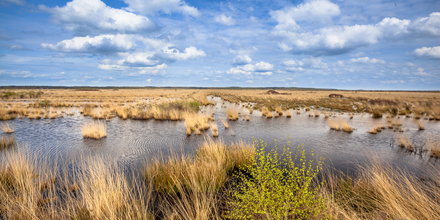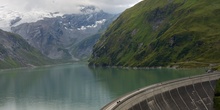Biodiversity
Our Work
Latest in Biodiversity
-

Fitness Check of the Birds and Habitats Directives
The Nature Directives (i.e. Birds Directive and Habitats Directive) are the key instruments of EU environmental policy; the Fitness Check support study, carried out by Milieu, IEEP and ICF for the European Commission DG-ENV, examined their effectiveness, efficiency, relevance, EU-added value and their coherence with the wider acquis.
-
New report launch: Call for a new vision for responsible renewable energy with a clear European dimension
Claude Turmes MEP hosted an event launching both IEEP’s report and a debate on the future of renewable energy in Europe. In the our report IEEP present how a resource efficient energy system might be delivered in a way that minimises impact on biodiversity and the wider environment.
-
A New Vision for Responsible Renewable Energy with a Clear European Dimension
Renewable energy is key to the decarbonisation of Europe’s energy supply, however, the scale of expansion needed will have significant impacts over a considerable area. This new report suggests how a resource efficient energy system might be delivered in a way that minimises and mitigates impacts on biodiversity and the wider environment.
-
Evidence before ideology
The latest edition of IEEP's newsletter is now available. David Baldock argues that in 2015 solid evidence rather than political fashion will be required in scrutinising EU policy and economic performance. Also: fossil fuel subsidies; allocating fishing quota; and the launch of our new training programme.
-
Greener Britain: Practical proposals for party manifestos from the environment and conservation sector
A coalition of the UK’s leading environmental groups, including IEEP, is calling for all political parties to commit to a greener Britain by 2020 by pledging seven major priorities to reform the way we use energy, build communities and protect nature.
-
On the path to a circular economy
Read the lastest edition of our newsletter for our views on the circular economy package and much more.
-
Options for sustainable food and agriculture in the EU
How should Europe respond to the increased demands on our food and agriculture systems arising from global population growth, changing diets, and competing demands on agricultural land? This report offers a view on how the EU could play a role in meeting these challenges in the coming decades and sets out some of the options which merit particular attention.
-
Europe’s role in feeding the world in 2050
IEEP presents views on how Europe should respond to the increased demands on our food and agriculture systems arising from global population growth, changing diets, and competing demands on agricultural land.
-
Interactions between climate change and agriculture; and between biodiversity and agriculture in Europe
What should be Europe’s role in feeding the world in 2050? This IEEP report for the European Parliament describes options for increasing the productivity of European agriculture whilst adapting to climate change, reducing emissions, and providing biodiversity and ecosystem service benefits from agriculture.
-
Ecosystem services of boreal mires and peatlands in Finland
Mire ecosystems are well-known for their unique species and habitats of high conservation value and they also provide a range of benefits to our societies and economies. This publication outlines the results of a pioneering project that aimed to identify and valuate ecosystem services provided by pristine mires and managed peatlands in Finland.
-
Land as an Environmental Resource
How can we meet the different and often conflicting demands we make on our limited supply of rural land in Europe? A more strategic approach to the way in which land is used is needed than has been the case in the past. This report for DG Environment looks at the data, the challenges and the policy options for Europe.
-
Land use mapping for sustainable biofuels
IEEP and WWF join forces to define criteria and principles to guide the mapping of appropriate land use to ensure sustainable biofuel crops.
-
Addressing ILUC? The European Commission’s proposal on indirect land use change
The European Commission’s proposal on indirect land use change – what’s in it for mitigating emissions? Read IEEP’s latest Biofuel ExChange briefing.
Highlights
-

A New Vision for Responsible Renewable Energy with a Clear European Dimension
Renewable energy is key to the decarbonisation of Europe’s energy supply, however, the scale of expansion needed will have significant impacts over a considerable area. This new report suggests how a resource efficient energy system might be delivered in a way that minimises and mitigates impacts on biodiversity and the wider environment.
